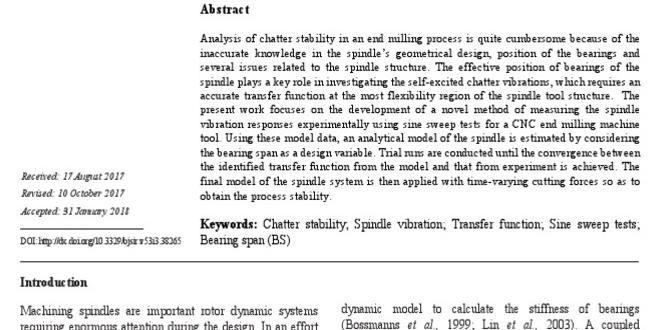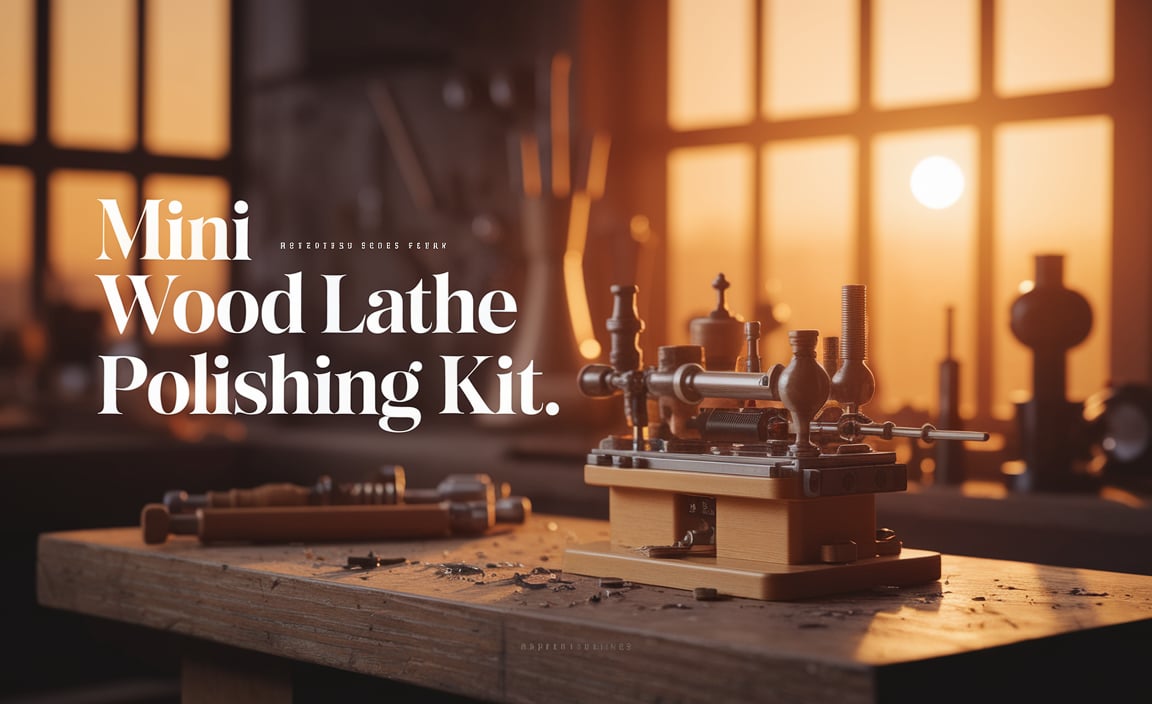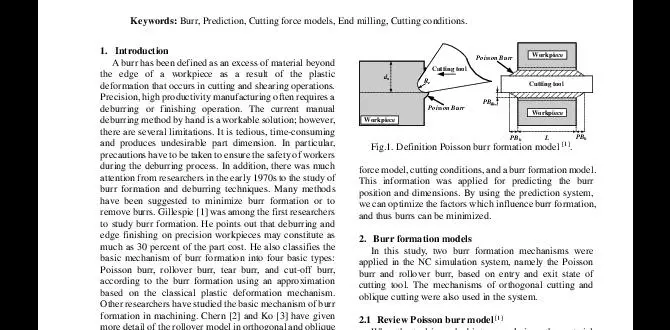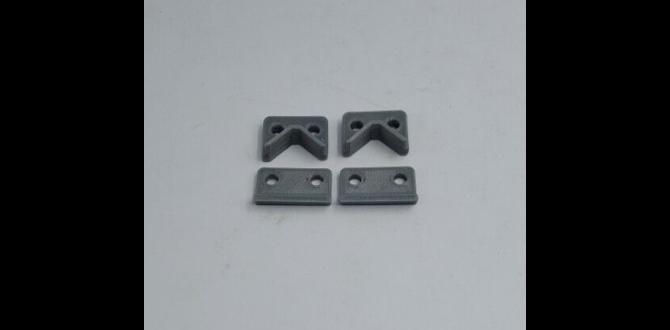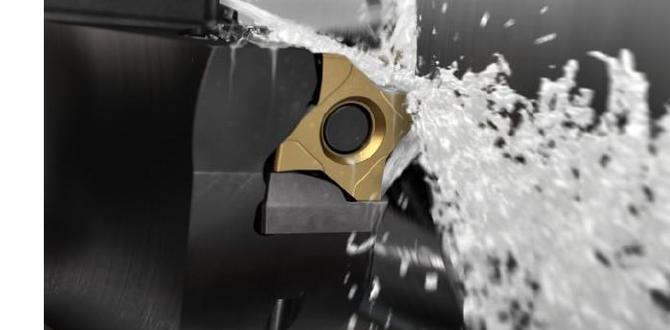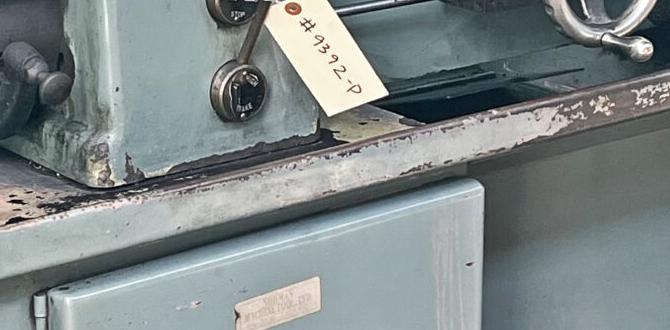Find the best wood lathe tool sharpening machine for your workshop to keep your turning tools razor-sharp and ready for any project. This review guides beginners through choosing a reliable and easy-to-use machine, ensuring smooth cuts and satisfying results every time.
Welcome to Lathe Hub! If you’ve ever struggled with dull wood lathe tools, you know how frustrating and even dangerous it can be. Blunt chisels and gouges fight you, produce rough finishes, and can even cause your workpiece to fly off the lathe. Getting them back to a perfect edge shouldn’t feel like a complex engineering puzzle. That’s why finding the right wood lathe tool sharpening machine is so important. We’re here to cut through the confusion and help you discover the best machine that makes sharpening simple, safe, and effective for every woodworker.
Why Sharp Tools Matter for Your Wood Lathe
Sharp tools are the heart of successful woodturning. They’re not just about making pretty bowls or spindles; they’re about control, safety, and efficiency. When your lathe tools are sharp, they glide through the wood, leaving a clean, smooth surface. This means less sanding later on, saving you valuable time and effort. More importantly, sharp tools require less force to cut, giving you better control over your workpiece. This dramatically reduces the risk of catches, which can lead to damaged projects or serious injury.
Think of it this way: trying to turn wood with dull tools is like trying to cut a tomato with a butter knife. It’s a messy, difficult job that rarely ends well. With a wood lathe tool sharpening machine that’s set up right, your tools will perform like they’re brand new, making your turning experience far more enjoyable and productive.
Understanding Different Types of Sharpening Methods
Before diving into specific machines, it’s helpful to know the basic ways wood lathe tools are sharpened. Each has its pros and cons, and understanding them helps you appreciate what a sharpening machine does:
1. Freehand Sharpening
This is the most traditional method, often done on a grinding wheel or a sharpening stone. It requires a lot of skill and practice to hold the tool at the correct angle consistently. While experienced woodturners can achieve incredible results, beginners often find it challenging to maintain the precise bevel angle, leading to inconsistent results or even damaging the tool’s temper.
2. Jig-Based Sharpening
Jigs are designed to hold your tool at a specific, repeatable angle against a grinding wheel or sharpening belt. This takes much of the guesswork out of freehand sharpening. Many dedicated sharpening machines incorporate jigs or have integrated systems that act like advanced jigs, making it easier for anyone to achieve a sharp edge.
3. Grinding Wheels
Typically used with water (wet grinders) or dry. Water-cooled grinders spin slower, reducing the risk of overheating and drawing the temper from the tool’s steel. Dry grinders spin faster and can remove metal more quickly but require more care to avoid overheating. The grit of the wheel determines how quickly metal is removed and the finish left on the edge.
4. Sharpening Belts
These systems use abrasive belts, similar to those on a belt sander. They can be very effective and offer a good balance between speed and control. Some sharpening machines use belts exclusively, while others offer them as an alternative to grinding stones.
Your Guide to Selecting the Best Wood Lathe Tool Sharpening Machine
The “best” wood lathe tool sharpening machine isn’t a one-size-fits-all answer. It depends on your budget, the types of tools you use, and how much time you want to dedicate to sharpening. However, certain features and types of machines stand out for their effectiveness and ease of use for beginners. We’ll focus on machines that simplify the process and deliver repeatable, excellent results.
Key Features to Look For in a Sharpening Machine:
When you’re looking at different models, keep these important features in mind:
- Ease of Use: For beginners, this is paramount. Does it have clear instructions? Are the setup and operation straightforward?
- Angle Adjustment: The ability to easily set and lock in the correct bevel angle is crucial for consistent sharpening.
- Versatility: Can it sharpen all your common woodturning tools – gouges, skew chisels, scrapers, parting tools?
- Durability: A good sharpening machine is an investment. Look for robust construction that will last.
- Speed and Efficiency: How quickly does it sharpen? While you don’t want to rush, efficient sharpening means you’ll spend more time turning and less time waiting.
- Overheating Prevention: Especially important with grinding wheels. Water-cooled or slower-speed options are generally safer for preserving your tool’s temper.
- Included Jigs: Do the jigs provided effectively hold different types of tools and guide them at the correct angle?
- Noise Level: Some grinders can be quite loud. Consider this if noise is a concern in your workshop.
Top Wood Lathe Tool Sharpening Machine Options for Beginners
Let’s break down some of the popular and highly-regarded wood lathe tool sharpening machines that are friendly for beginners. We’ll look at general categories and specific examples that consistently get great reviews for making tool care simple.
1. The “All-in-One” Grinding System (e.g., Wolverine Grinding Jigs with Bench Grinder)
This is a very popular and effective approach for many beginners and experienced turners alike. It combines a standard bench grinder with specialized jigs designed to hold your turning tools and guide them against the grinding wheel at precise angles. The most well-known system is the Oneway Wolverine Grinding Jig.
How it Works:
You mount your bench grinder (ideally a 6-inch or 8-inch model with adjustable tool rests) and then attach the Wolverine jig to the tool rest. The jig has a slot where you insert the tool. You then rest the jig on the grinder’s tool rest and rotate it while pushing the tool against the wheel. The jig’s design ensures that the bevel angle remains consistent throughout the sharpening process, replicating the grind marks you see on factory-sharpened tools.
Pros:
- Excellent Angle Control: The jig makes it very easy to maintain a consistent bevel.
- Versatile: Can sharpen gouges (both fingernail and bowl gouges), skew chisels, and turning scrapers with different attachments.
- Relatively Affordable: If you already own a bench grinder, the jig itself is a cost-effective way to upgrade your sharpening capabilities.
- Faster than Water-Cooling: Grinds quickly to re-establish a bevel.
- Widely Available and Supported: Lots of tutorials and resources available.
Cons:
- Risk of Overheating: Needs careful attention to avoid burning the tool’s edge, especially with standard gray grinding wheels. Using a CBN (Cubic Boron Nitride) grinding wheel is highly recommended to mitigate this risk and provides a superior grinding surface.
- Requires a Bench Grinder: An additional purchase if you don’t own one.
- Can be Noisy: Bench grinders can be loud.
Recommendation:
If you’re looking for a robust, repeatable sharpening solution and don’t mind the potential for overheating with standard wheels, the Wolverine jig paired with a good bench grinder is a fantastic choice. Consider investing in CBN wheels for the best results and to minimize heat issues.
2. Water-Cooled Grinding Systems (e.g., Tormek System)
Water-cooled grinders are designed for extremely gentle sharpening, making them ideal for preserving the temper of your valuable tools. These systems typically use a large, slow-turning grinding wheel that runs in a water bath. This combination keeps the tool cool, so you can’t accidentally overheat and ruin your edge.
How it Works:
The Tormek system, for example, features a large diameter grindstone that rotates through a reservoir of water. Various jigs are available to hold different types of woodworking tools, including all your lathe chisels and gouges. You mount the tool in the appropriate jig, set the angle against the stone, and slowly rotate the jig to sharpen. The water keeps the tool cool, and the slower speed of the wheel allows for precise control.
Pros:
Extremely Safe for Tool Temper: Virtually impossible to overheat your tools.
- Excellent Edge Quality: Often produces a very fine, sharp edge with minimal effort.
- Quiet Operation: Much quieter than a bench grinder.
- Versatile: The Tormek system, in particular, can sharpen a vast array of tools, not just lathe tools.
- Easy to Use Jigs: The jigs are generally well-designed and intuitive for beginners.
Cons:
- Higher Cost: Tormek systems are a significant investment.
- Slower Sharpening: Takes longer to remove metal compared to a high-speed grinder. This means it’s better for maintaining an edge or resharpening rather than re-grinding a badly damaged tool quickly.
- Requires Maintenance: The stone needs occasional truing and honing.
Recommendation:
For those who prioritize tool longevity, quiet operation, and a consistently perfect edge without the fear of overheating, a water-cooled system like Tormek is an excellent, albeit pricier, choice. It’s incredibly beginner-friendly and will serve you for decades.
3. Belt Sharpening Systems (e.g., Work Sharp Tool Grinder – though some models are more hand-tool focused)
Sharpening systems that use abrasive belts offer a different approach. They are often more compact and can provide a very keen edge. Some systems are designed specifically for turning tools.
How it Works:
These machines use abrasive belts, often in multiple grits. You typically hold the tool against the moving belt, often with the aid of a jig or guide. The speed of the belts can vary, but generally, they offer a good balance of material removal and the ability to achieve a fine edge.
Pros:
- Fast and Efficient: Belts can remove metal quickly.
- Good Edge Finish: Can produce a very sharp edge, often with a honing belt option.
- Compact: Many belt systems take up less space.
- Less Risk of Overheating (depending on model): Some designs manage heat better.
Cons:
- Belt Wear: Belts are consumable and need replacement, adding to the ongoing cost.
- Angle Consistency: Can be trickier to maintain a perfect angle compared to some jig-based grinder systems, though many systems include angle guides.
- Tool Capacity: Some systems might be better suited for specific tool types, so check compatibility.
Recommendation:
For turners who want a fast sharpening solution and appreciate the feel of belt abrasives, these machines can be a great option. Ensure the specific model you choose has ample support for woodturning tools and good angle guides.
Comparison Table: Sharpening Machine Types
To help you visualize the differences, here’s a quick comparison:
| Feature | Bench Grinder + Jig (e.g., Wolverine) | Water-Cooled Grinder (e.g., Tormek) | Belt Sharpening System |
|---|---|---|---|
| Ease of Use for Beginners | Good, especially with jigs. Requires learning heat management. | Excellent. Very forgiving and safe. | Good, but angle consistency can vary by model. |
| Risk of Overheating | High with standard wheels; Low with CBN. | Virtually None. | Moderate; depends on speed and design. |
| Speed of Sharpening | Fast. Good for re-grinding. | Slower. Best for maintenance. | Fast to Moderate. |
| Initial Cost | Moderate (grinder required). | High. | Moderate to High. |
| Ongoing Costs | Low (wheels last a long time, especially CBN). | Moderate (consumables like honing compound, occasional stone dressing). | Moderate (belts need regular replacement). |
| Edge Quality | Excellent with practice and good wheels. | Excellent, often very refined. | Very good to excellent. |
| Noise Level | High. | Low. | Moderate. |
How to Sharpen Your Wood Lathe Tools: A Step-by-Step Walkthrough (Using a Bench Grinder & Jig Example)
Let’s walk through the process of sharpening a typical woodturning gouge using a bench grinder and a popular jig system like the Oneway Wolverine. The principles apply to other systems, with adjustments for their specific jigs and methods.
What You’ll Need:
- Your wood lathe tool (e.g., a bowl gouge)
- Bench Grinder (6 to 8-inch recommended) with two wheels (e.g., aluminum oxide wheel and a CBN wheel, or two aluminum oxide wheels)
- Grinding Jig (e.g., Oneway Wolverine Grinding Jig)
- Tool Rest (adjustable, for your grinder)
- Safety Glasses (absolutely essential!)
- Hearing Protection (recommended)
- Dust Mask (recommended)
- Magnifying Glass (optional, for inspecting the edge)
- Leather Strop and Honing Compound (for final polishing)
Step-by-Step Sharpening Process:
- Safety First: Always wear your safety glasses. Ensure your grinder is stable and that guards are in place. Locate the tool rest and adjust it to a safe distance from the grinding wheel – usually about 1/8 inch.
- Install the Jig: Attach your grinding jig (like the Wolverine) to the grinder’s tool rest. Ensure it’s securely positioned and can pivot smoothly.
- Prepare Your Tool: Identify the bevel you need to sharpen. For a bowl gouge, you’re typically sharpening the flutes and the wing edges.
- Set Up the Jig for Holding: Insert your gouge into the jig’s appropriate slot. Many jigs have adjustable stops or mechanisms to set the depth and angle. For a typical bowl gouge, you’ll want to set it up so that when held against the wheel, it creates the desired fingernail grind. Adjust the jig so that the bevel rests flat against the grinding wheel surface.
- Adjust the Grinder Wheel: If you have two wheels, decide which to use first. Often, a coarser grit wheel (or CBN wheel) is used for any necessary re-profiling or initial sharpening, followed by a finer grit wheel for refining the edge. Ensure the tool rest is positioned correctly for the angle you want.
- Begin Grinding:
- Turn on the grinder. Let it reach full speed.
- Hold the jig with the tool firmly.
- Gently bring the bevel of the tool into contact with the spinning wheel.
- Rotate the jig back and forth smoothly, applying light pressure. The jig helps maintain the bevel angle.
- For a bowl gouge, you’ll typically be alternating sides, turning about 50-70% of the way up the bevel at a time. Work on one side for a few passes, then switch to the other.
- Periodically dip the tool in water to cool it down. If you’re using a CBN wheel, this is less critical but still good practice. Feel the tool – if it’s too hot to hold comfortably, it’s too hot!
- Check for a Burr: After a few passes on each side, run your fingernail gently along the opposite side of the cutting edge (the heel). You should feel a small wire edge or burr. This indicates you’ve ground through the metal and created a sharp apex.
- Repeat on the Second Wheel (Optional but Recommended): If you used a coarser wheel, switch to your finer grit wheel (or the other side of your dual-grit wheel) and repeat the process. This refines the edge. Aim to remove only the scratches from the coarser wheel.
- Hone and Strop: Once ground, the tool will have a “wire edge.” For a truly keen, polished edge, hone the bevel. You can use a sharpening stone, or for most woodturners, a leather strop charged with honing compound works wonderfully.
- Gently drag the bevel of the tool along the strop in the direction of the cutting edge.
- Work from the heel of the bevel towards the tip.
- Repeat several times, alternating sides.
- Finish by stropping the face of the tool.

